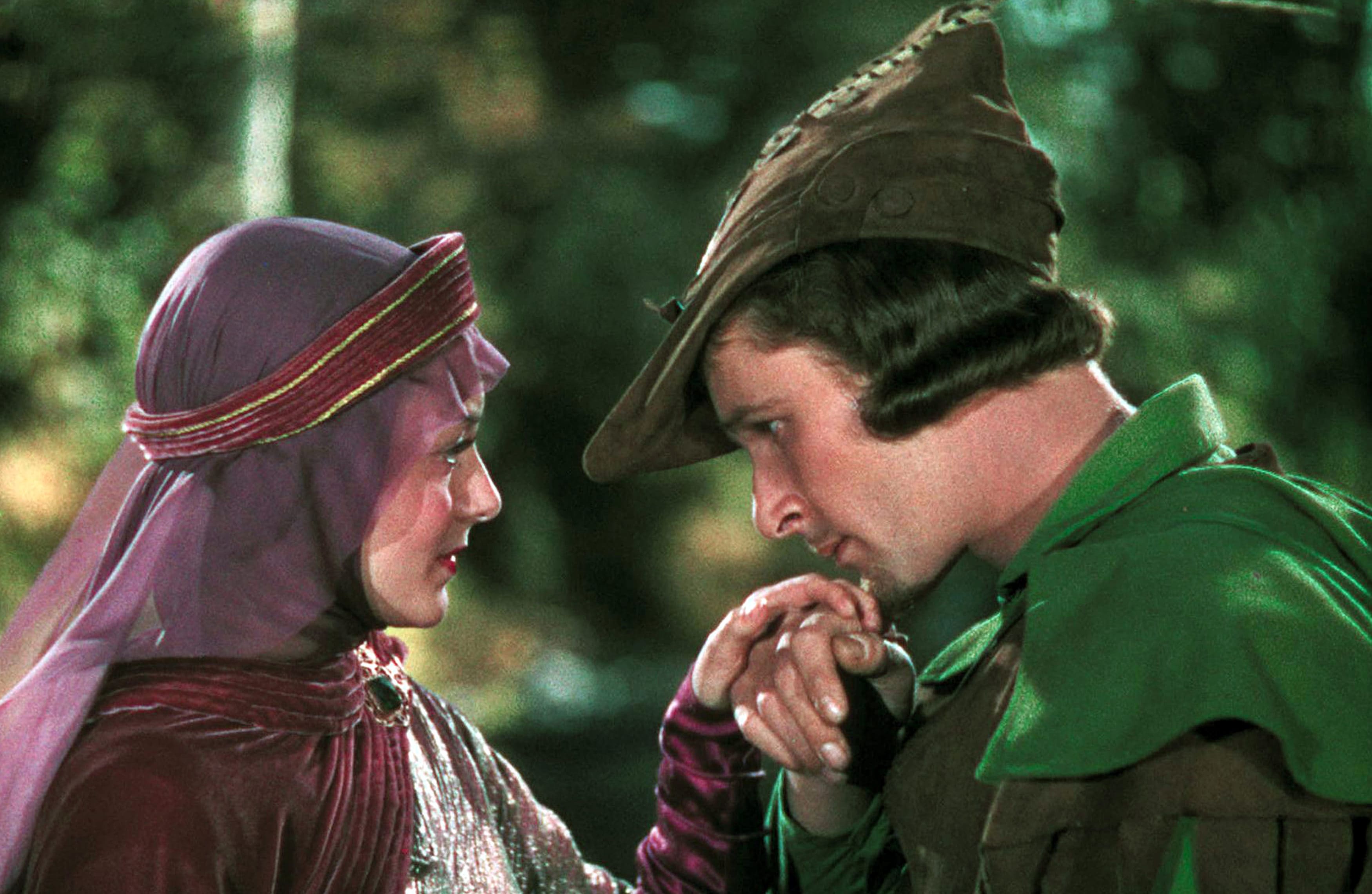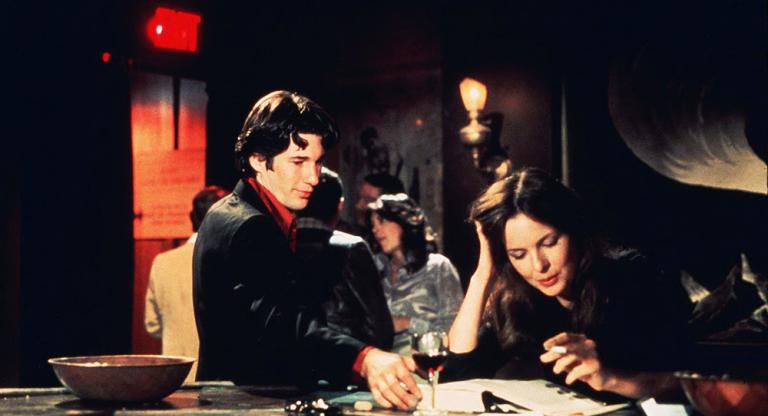I visited Errol Flynn’s grave last week. It’s located a few stoplights out of Hollywood in Glendale’s Forest Lawn Memorial Park. It sits along a vine-covered wall in a section of the palatial cemetery called the “Garden of Everlasting Peace.” A previous visitor had left a small bouquet before the star’s bronze headstone—a mix of white, yellow, and fuchsia carnations with a wisp of baby’s breath. These are the flowers of sudden hospital visits and quick grocery store runs—the kind one picks up when he remembers there’s somebody to whom he should say sorry. Errol Flynn’s reputation is pretty notorious, with his ribald adventures chronicled in such salacious tomes as Kenneth Anger’s Hollywood Babylon, Scotty Bowers’s Full Service, and his own posthumous autobiography My Wicked Wicked Ways, and I imagine he made a lot of apologies for misdeeds in his scant 50 years.
Watching The Adventures of Robin Hood (1938), the third of seven collaborations with both director Michael Curtiz and co-star Olivia de Havilland, I’m reminded how Flynn’s image as a star centers around this role. It’s sort of his spiritual resting place, on film. Here, as in the stylish Captain Blood (1935), he’s the sensitive swashbuckler. A tricky smart aleck whose steel protects his men and whose heart is for one woman. But playing the part of Robin Hood, the Saxon nobleman turned outlaw, Flynn’s own personality seems to seep irrevocably into the character's contours. And though Douglas Fairbanks played the role with athletic aplomb in the 1922 silent epic Robin Hood, it’s Flynn’s portrayal that’s served as Sir Robin’s template across media for decades.
Flynn’s body language—chin up, hands on hips—is like first position for the character; his styling—blonde goatee and that pea-green tunic—now recalls a Spirit Halloween promo image. His smirk and sporting laugh are the bedrocks of Cary Elwes’s performance in Robin Hood: Men in Tights (1993), though Mel Brooks’s film was timed to spoof Robin Hood: Prince of Thieves (1991). Flynn scales turrets, flings arrows, and clanks swords with a sprightly energy that’s part lean muscle, part do-gooding will. He brings an acrobatic action style to the film that was aped not just by successive Robins but also next-gen matinee idols like Tony Curtis in The Black Shield of Falworth (1954) and Robert Wagner in Prince Valiant (1954).
The Adventures of Robin Hood was Warner Bros.’s first movie in three-strip Technicolor, and the studio pumped $2 million into it, an investment they reportedly doubled at the box office). The film’s palette is rich, like the colors of heraldic flags. Its scale feels huge, replete with extras, big set pieces, and stunts. Other characters and tropes of the folk tale—not just Flynn’s portrayal of its hero—seem to become codified by the film, to be repeated by others indefinitely: an impotent Sheriff of Nottingham, a cheeky Bess, a gravel-throated Friar Tuck. It’s undoubtedly the definitive filmic depiction of the Robin Hood legend, with every subsequent version emulating it, parodying it, or pointedly diverging from it (think more recent dark interpretations like Ridley Scott’s 2010 release, starring Russell Crow). It’s the idol to which all Robin Hood movies leave flowers.
The Adventures of Robin Hood screens this evening, September 4, in a 35mm restoration print at the Museum of Modern Art as part of the series “Eye Candy: The Coming of Color.”



